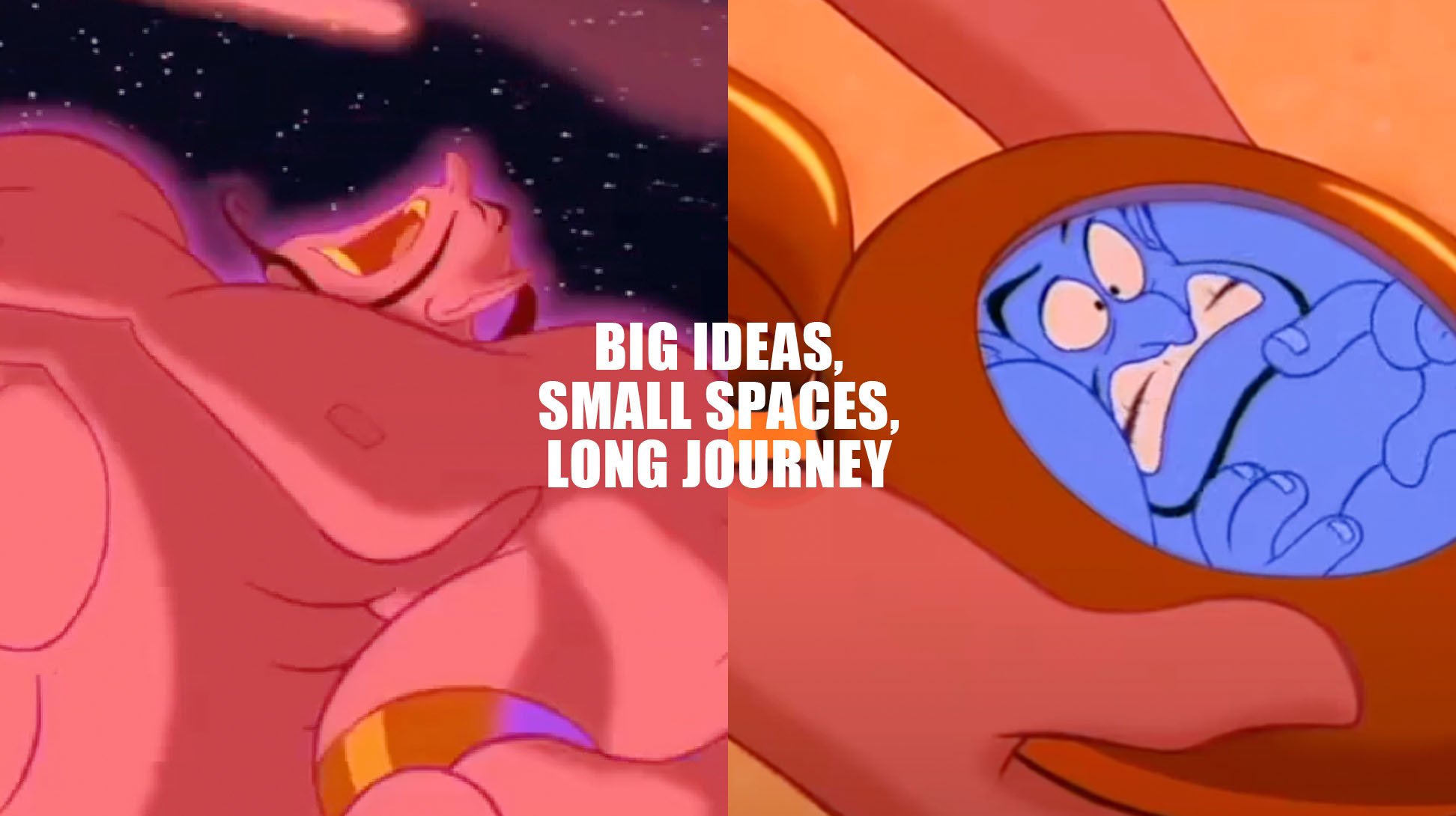Digital transformation in marketing means using technology to continuously evolve all aspects of the business model, including what it offers, how it interacts with customers, and how it operates.
But what does it mean for creatives, and what are the implications for creativity?
Programmatic, dynamic creative optimization, AI and automation make most creatives in the industry roll their eyes, cringe and simultaneously freeze their brains. But, today, storytelling can happen in various forms and channels, offering opportunities to deliver a message seamlessly and dynamically. At first, it can look fragmented, but in the end, it builds a complete story mosaic in the consumers' minds. However, if storytelling on Stories, bumper, and reels is already challenging, imagine creating Big ideas that will exist mostly on straightforward and shorter formats?
This may look challenging and yet a simple shift, but it's far more complex than it shows. Traditionally, we think about a Big Idea, then apply it to a long format like TV spot, for example, and then trickle it down to social, programmatic, display, etc. But in today's digital, image, and social-driven speed, every second counts; everything is measurable and demands reach and efficiency. That's because competition for viewers' attention has increased immensely in the last few years. Mainly brands are competing with other brands' messages, and on top of it, with user-generated content, which makes the digital space incredibly crowded.
Today's challenge for creatives is to shift the way we work and ideate – flipping it from traditional creative Big Ideas and campaign narratives ideation to thinking of Big Ideas that unlocks the power of small formats, dynamic and always-on social content with the most reach, following a customer journey, connecting channels, and identifying opportunities for disruptive technology to build a cohesive campaign tapestry.
It's been said that a Big Idea is channel agnostic, which is very accurate. But to industry creatives, it is crucial to collaborate with experts to feed Big Ideas with behavior insights data to curate, translate and customize them through innovative and optimized formats. Creative Technologists, Data Analysts, Strategists, and Media and Community Leads, these are the experts.
Even with expert support, the challenges for creativity are enormous. The current competitive landscape demands more functional and straightforward messages delivered in short spaces and formats with enough impact to engage consumers to fall in love with a brand ethos or offer one click away from purchasing.
Consumers today are accustomed to making decisions in a heartbeat. Sometimes all they need is to watch a 10 seconds ad to decide to purchasing the advertised item in a matter of seconds. Just like that. It happens to everyone, at any time of the day, and often it was unplanned - and as we all know, we frequently end up purchasing things on a whim that we simply don't need. But it proves how much is at stake when looking at a seemingly innocent 10 seconds digital ad.
But the mandate for disruptive creativity doesn't stop there. Consumers behave differently on each platform. That's why technology, data and consumer behavior insights are crucial to finding the perfect moment to capture viewers' attention on these platforms. Clarity on what business problem creative needs to solve and balance between transaction and brand building is decisive. It takes a lot of work for a few seconds ad to deliver on this expectation. Never before has so much relied on clear-cut briefings and creativity to move consumers' fingers and increase business performance.
Still, creatives feel that campaign briefings have become more tactical and with many more limiting building blocks. It's true. It's also true that, at first, they might look less sexy and inspiring. But think of that digital ad that, in a split second, made you buy a very unnecessary product. It still offers an opportunity to be creatively disruptive, making Big Ideas come to life in many tiny spaces that build a whole narrative cutting through the noise to reach audiences more meaningfully and delightfully. One itty-bitty spot at a time. Today, storytelling doesn't play out entirely in one single ad anymore; instead, the complete story comes to life through the digital landscape ride.
The marketing environment has changed, but a good creative is always up for a good challenge. Today's digital sandbox offers a variety of tools for creativity, but it also comes with a provocation: never giving up on Big Ideas but thinking of them as a journey.



















